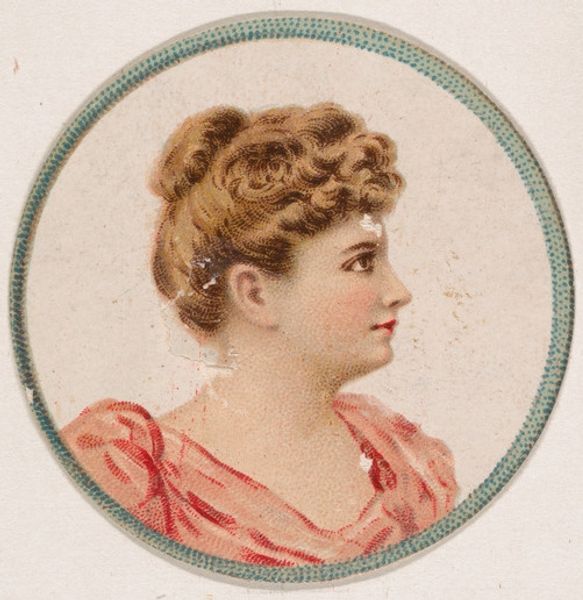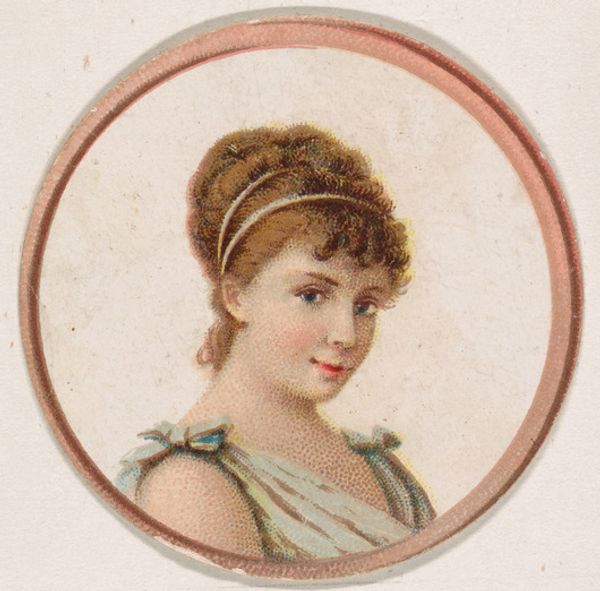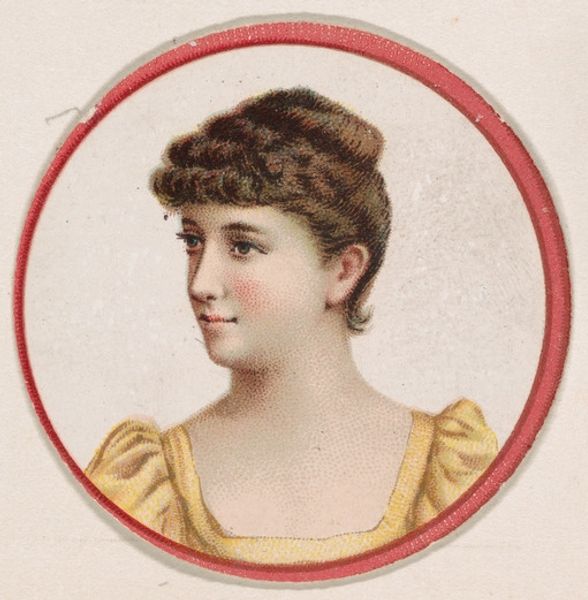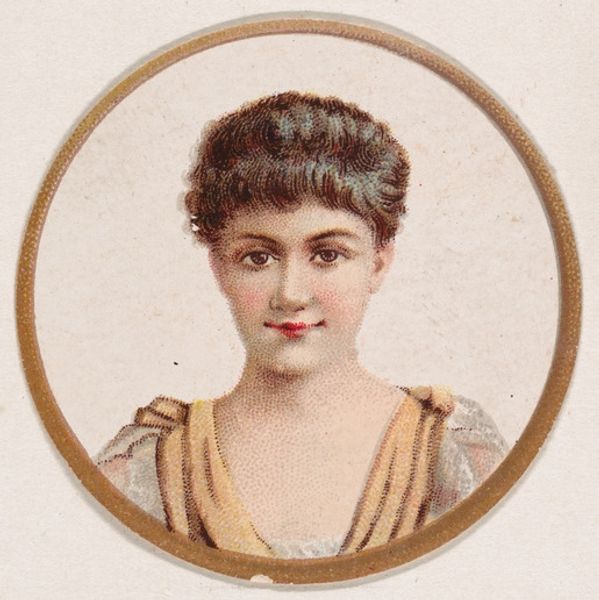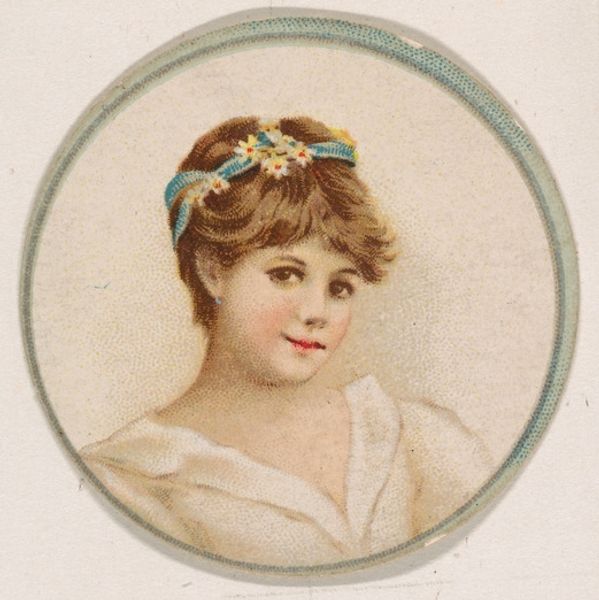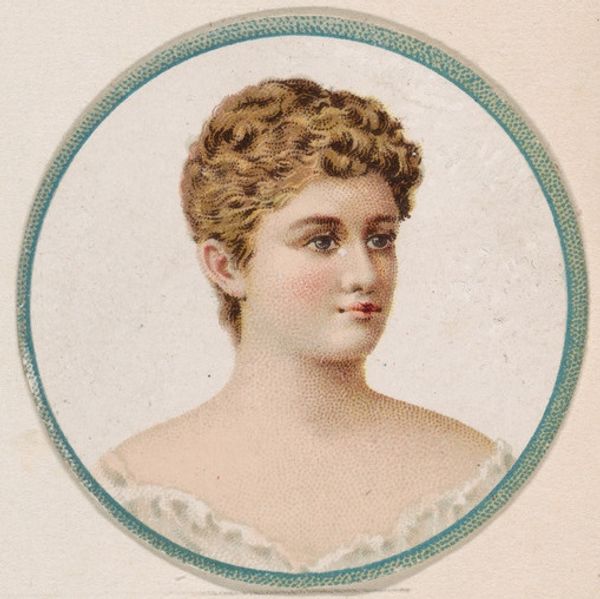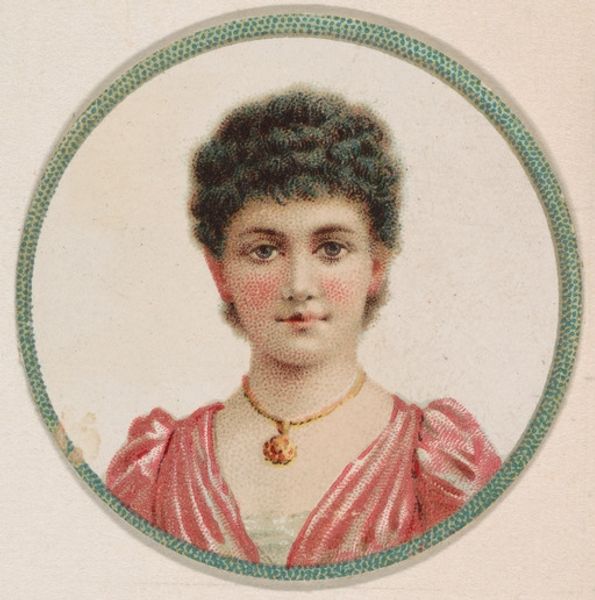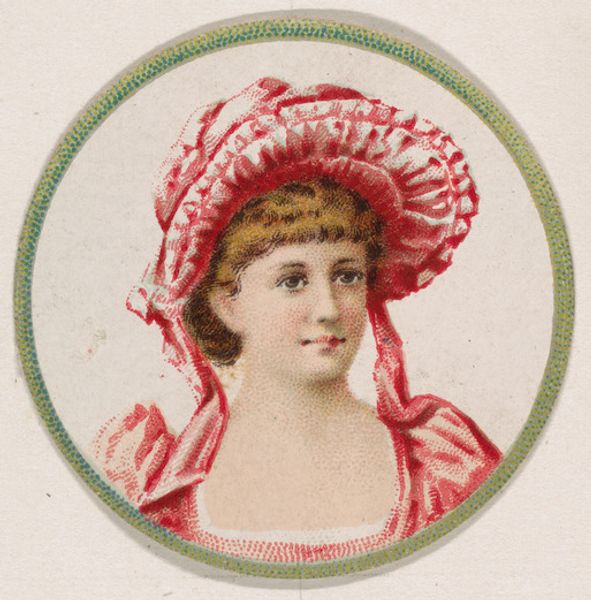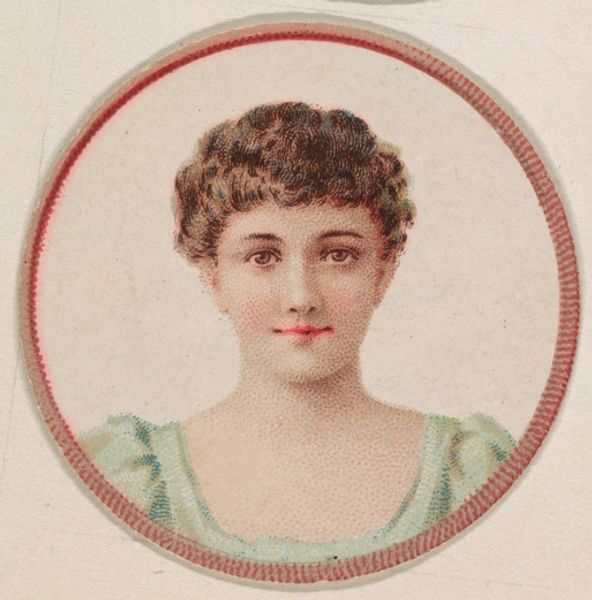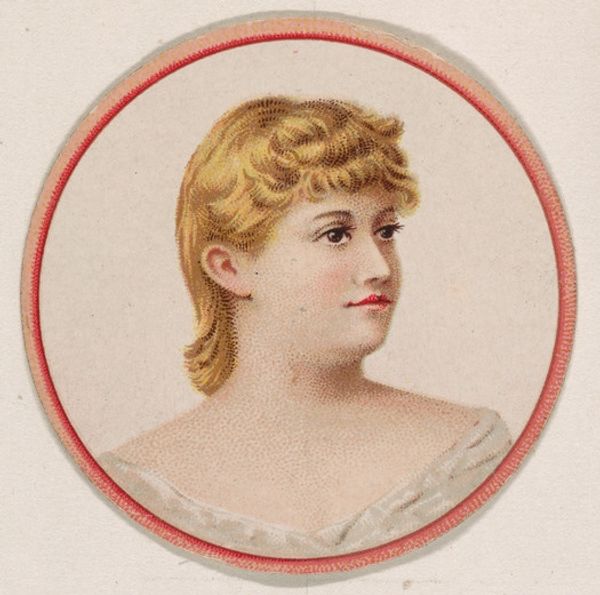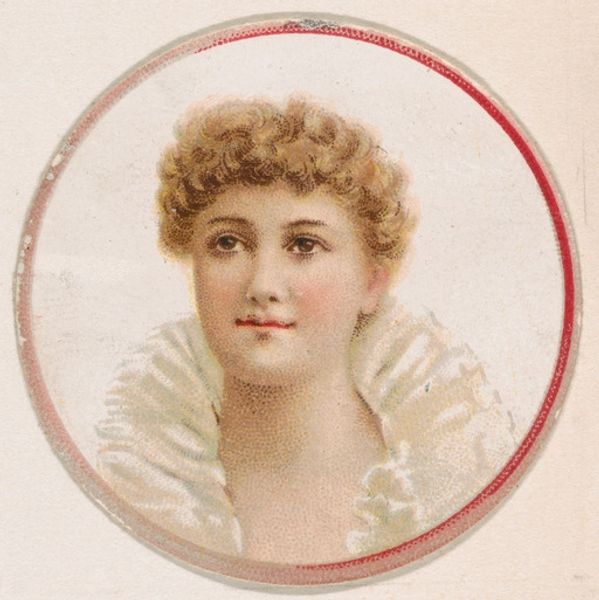
Portrait of woman, from the Novelties series (N228, Type 2) issued by Kinney Bros. 1889
0:00
0:00
Dimensions: Sheet (Round): 1 9/16 × 1 9/16 in. (4 × 4 cm)
Copyright: Public Domain
Curator: Here we have a charming little print, "Portrait of woman, from the Novelties series," produced by Kinney Bros. around 1889. It’s currently part of the Metropolitan Museum of Art's collection. Editor: Immediately I’m struck by its quietness, its subtle femininity. It evokes a feeling of a bygone era, of lace and propriety. The woman's gaze is serene, almost demure. Curator: The print's small scale, like many trade cards of the period, underscores its original purpose—mass production for advertising, specifically for tobacco products. Consider the labor involved in producing thousands of these. The quality of the materials also speaks to a specific economic reality, likely utilizing inexpensive paper and readily available pigments. Editor: The circular format calls to mind portrait medallions of antiquity, imbuing this “common” woman with a kind of classical virtue. The floral border also echoes classical wreaths of honor and it suggests something about how women were idealized. What stories did she want to tell and which ones did others craft for her? Curator: Fascinating point! The "Novelties series" catered to consumer desires for beauty and sophistication through mass-produced ephemera. Kinney Bros. were effectively selling not just tobacco but an aspiration to refinement and fashionable culture. They employed processes designed for efficiency to appeal widely and cheaply, so their production choices themselves become artifacts of that aspiration. Editor: The woman’s hairstyle, that delicate arrangement of curls, points to beauty standards of the late 19th century. It makes me consider this image’s cultural weight in promoting or even defining an ideal woman and the fact that these were designed to slip in among everyday goods points to how thoroughly the message was embedded. Curator: I’ve come to see beyond its apparent simplicity. I see it as a complex artifact—a humble yet potent emblem of late 19th-century industrialization and consumer culture. Editor: Yes, an exploration into what it meant to see oneself reflected in an age of mass production. I appreciate that added complexity and its lasting impact.
Comments
No comments
Be the first to comment and join the conversation on the ultimate creative platform.
